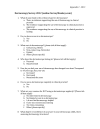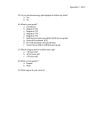Trends in dermoscopy use in the UK: results from surveys in 2003 and 2012
- PMID: 26114049
- PMCID: PMC4462896
- DOI: 10.5826/dpc.0502a04
Trends in dermoscopy use in the UK: results from surveys in 2003 and 2012
Abstract
Background: Dermoscopy is a useful tool to aid diagnosis of pigmented and non-pigmented skin lesions, as well as many other dermatological conditions. Use of dermoscopy is increasing worldwide, but to date, there are no reported data on attitudes of dermatologists in the United Kingdom (UK) towards dermoscopy.
Objective: To determine current attitudes of UK dermatologists towards dermoscopy and assess how these attitudes have changed over the last decade.
Methods: In October 2012, an online survey was sent to members of British Association of Dermatologists over a 12-week period. Data were subsequently compared with data from a similar UK nationwide paper questionnaire distributed to members in 2003.
Results: The 2003 survey collected 292 responses (uptake 42%), and in 2012 there were 209 responses (22%), predominantly from consultants and registrars. In 2012, 86% respondents reported increased use of dermoscopy over the previous decade with 98.5% of respondents reporting regular clinical use of dermoscopy, compared with 54% in 2003. Overall, 81% respondents in 2012 had received dermoscopy training, mainly from UK-based courses (62% of respondents) but increasingly via Internet-based resources (30% vs. 7% in 2003). However, 39% respondents lacked confidence when making a diagnosis based on their interpretation of dermoscopy findings.
Conclusions: Over the last decade, use of dermoscopy has increased amongst UK dermatologists and the majority of respondents now employ dermoscopy in daily clinical practice. However, the use of dermoscopy in the dermatology community overall is not known and for those individuals there is a continued need for education.
Keywords: UK dermatologists; attitudes; dermoscopy; survey.
Figures










References
-
- Pehamberger H, Steiner A, Wolff K. In vivo epiluminescence microscopy of pigmented skin lesions. I. Pattern analysis of pigmented skin lesions. J Am Acad Dermatol. 1987;17(4):571–83. - PubMed
-
- Binder M, Schwarz M, Winkler A, et al. Epiluminescence microscopy. A useful tool for the diagnosis of pigmented skin lesions for formally trained dermatologists. Arch Dermatol. 1995;131(3):286–91. - PubMed
-
- Nachbar F, Stolz W, Merkle T, et al. The ABCD rule of dermatoscopy. High prospective value in the diagnosis of doubtful melanocytic skin lesions. J Am Acad Dermatol. 1994;30(4):551–9. - PubMed
-
- Moulin C, Poulalhon N, Duru G, et al. Dermoscopy use by French private practice dermatologists: a nationwide survey. Br J Dermatol. 2013;168(1):74–9. - PubMed
-
- Kittler H, Pehamberger H, Wolff K, Binder M. Diagnostic accuracy of dermoscopy. Lancet Oncol. 2002;3(3):159–65. - PubMed
LinkOut - more resources
Full Text Sources
